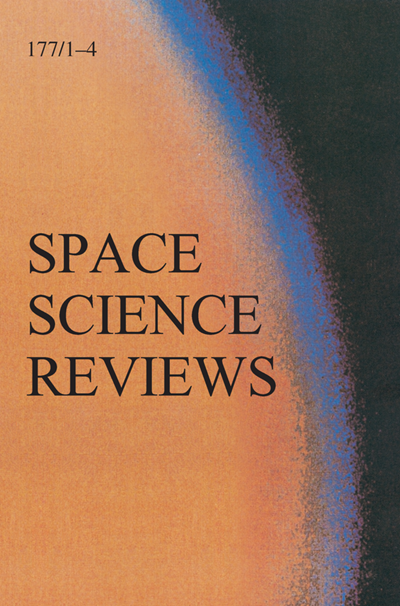金星的演化:关键的科学问题,选定的任务概念和未来的调查
IF 7.4
2区 物理与天体物理
Q1 ASTRONOMY & ASTROPHYSICS
引用次数: 3
摘要
在这项工作中,我们讨论了各种选定的任务概念,解决金星随时间的演变。更具体地说,我们解决调查和有效载荷仪器的概念,支持科学目标和开放的问题,提出了本卷的配套文章。还包括他们的相关调查(观察&建模),并讨论需要哪些测量和未来的数据产品来更好地约束金星的大气、气候、表面、内部和可居住性随时间的演变。一个新的金星任务舰队已经被选中,新的任务概念将继续被考虑用于未来的选择。正在开发的任务包括配备雷达的esa领导的EnVision M5轨道飞行器任务(欧洲航天局2021),NASA-JPL的VERITAS轨道飞行器任务(Smrekar等人,2022a), NASA-GSFC的DAVINCI进入探测/飞越任务(Garvin等人,2022a)。VERITAS、DAVINCI和EnVision在本十年末获得的数据将从根本上提高我们对地球长期历史、当前活动和进化路径的理解。我们进一步描述了在当前选定任务框架之外的未来任务概念和测量,以及这些任务概念、地面和天基天文台和设施、实验室测量和未来算法或建模活动之间的协同作用,这些活动为金星计划的发展铺平了道路,该计划将延伸到2040年代(Wilson et al. 2022)。本文章由计算机程序翻译,如有差异,请以英文原文为准。
Venus Evolution Through Time: Key Science Questions, Selected Mission Concepts and Future Investigations
Abstract In this work we discuss various selected mission concepts addressing Venus evolution through time. More specifically, we address investigations and payload instrument concepts supporting scientific goals and open questions presented in the companion articles of this volume. Also included are their related investigations (observations & modeling) and discussion of which measurements and future data products are needed to better constrain Venus’ atmosphere, climate, surface, interior and habitability evolution through time. A new fleet of Venus missions has been selected, and new mission concepts will continue to be considered for future selections. Missions under development include radar-equipped ESA-led EnVision M5 orbiter mission (European Space Agency 2021), NASA-JPL’s VERITAS orbiter mission (Smrekar et al. 2022a), NASA-GSFC’s DAVINCI entry probe/flyby mission (Garvin et al. 2022a). The data acquired with the VERITAS, DAVINCI, and EnVision from the end of this decade will fundamentally improve our understanding of the planet’s long term history, current activity and evolutionary path. We further describe future mission concepts and measurements beyond the current framework of selected missions, as well as the synergies between these mission concepts, ground-based and space-based observatories and facilities, laboratory measurements, and future algorithmic or modeling activities that pave the way for the development of a Venus program that extends into the 2040s (Wilson et al. 2022).
求助全文
通过发布文献求助,成功后即可免费获取论文全文。
去求助
来源期刊

Space Science Reviews
地学天文-天文与天体物理
CiteScore
19.70
自引率
3.90%
发文量
60
审稿时长
4-8 weeks
期刊介绍:
Space Science Reviews (SSRv) stands as an international journal dedicated to scientific space research, offering a contemporary synthesis across various branches of space exploration. Emphasizing scientific outcomes and instruments, SSRv spans astrophysics, physics of planetary systems, solar physics, and the physics of magnetospheres & interplanetary matter.
Beyond Topical Collections and invited Review Articles, Space Science Reviews welcomes unsolicited Review Articles and Special Communications. The latter encompass papers related to a prior topical volume/collection, report-type papers, or timely contributions addressing a robust combination of space science and technology. These papers succinctly summarize both the science and technology aspects of instruments or missions in a single publication.
 求助内容:
求助内容: 应助结果提醒方式:
应助结果提醒方式:


